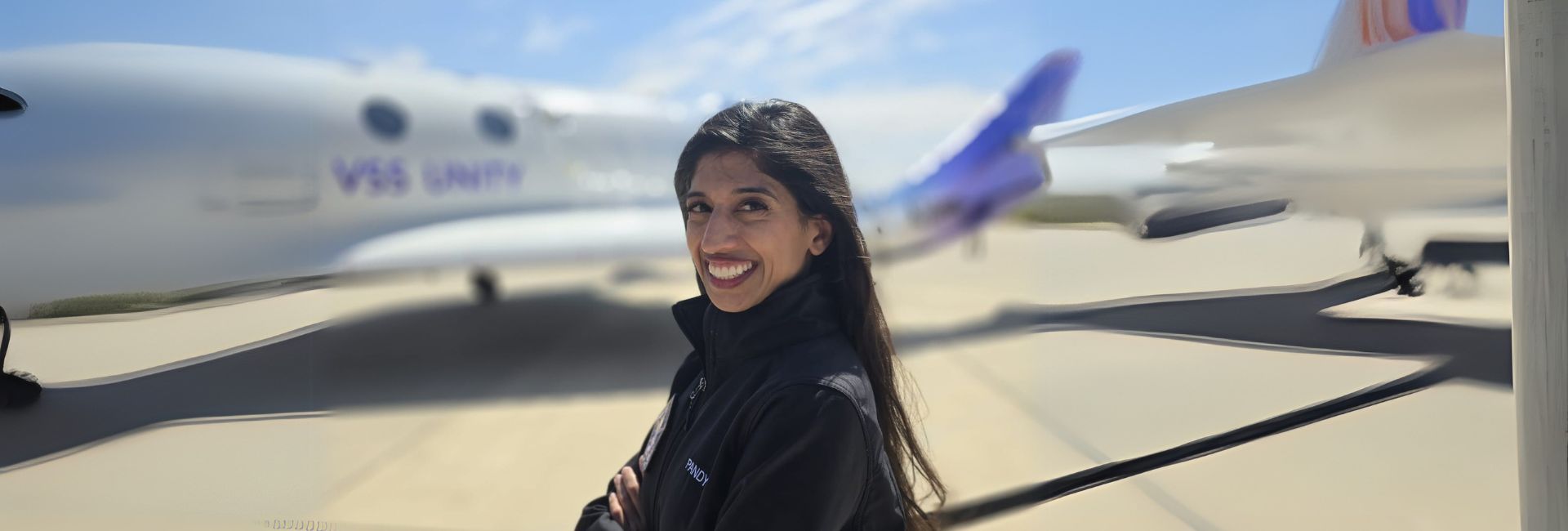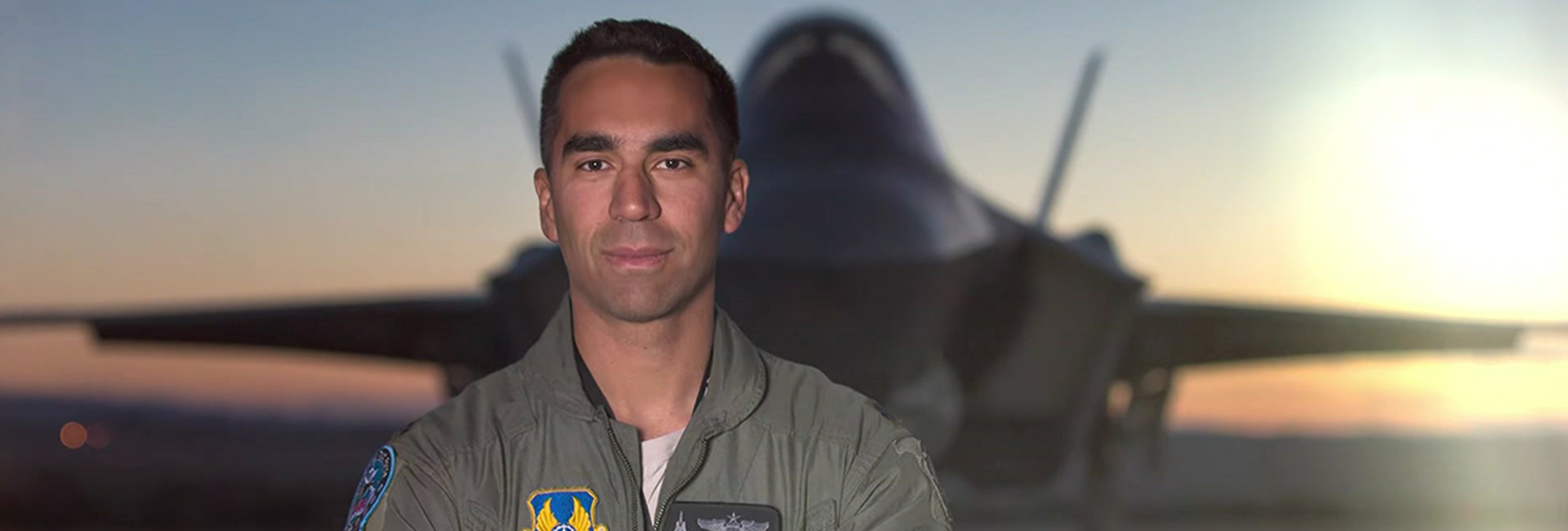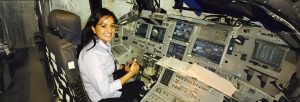(March 28, 2025) As astronaut Sunita Williams landed on Earth after spending 286 days in space, a thousand miles away another Indian-origin astronaut Dr Shawna Pandya was training in microgravity in parabolic flight for her maiden space mission next year. Scheduled for 2026, she will fly with Virgin Galactic on a research mission to advance experiments in space medicine, becoming the fourth woman of Indian origin to journey into space. “Representation matters,” says Dr Shawna Pandya, who often meets many young women of South Asian descent who are inspired by her example and believe they can succeed to. “I am very mindful of what my designation as the fourth Indian-origin woman to go to space means for the next generation of astronauts and space scientists. At the same time, the women who have gone before me – Kalpana Chawla, Sunita Williams, and Sirisha Bandla – have all blazed trails of excellence with their own legacies, and I know I have some very big shoes to fill,” she tells Global Indian.
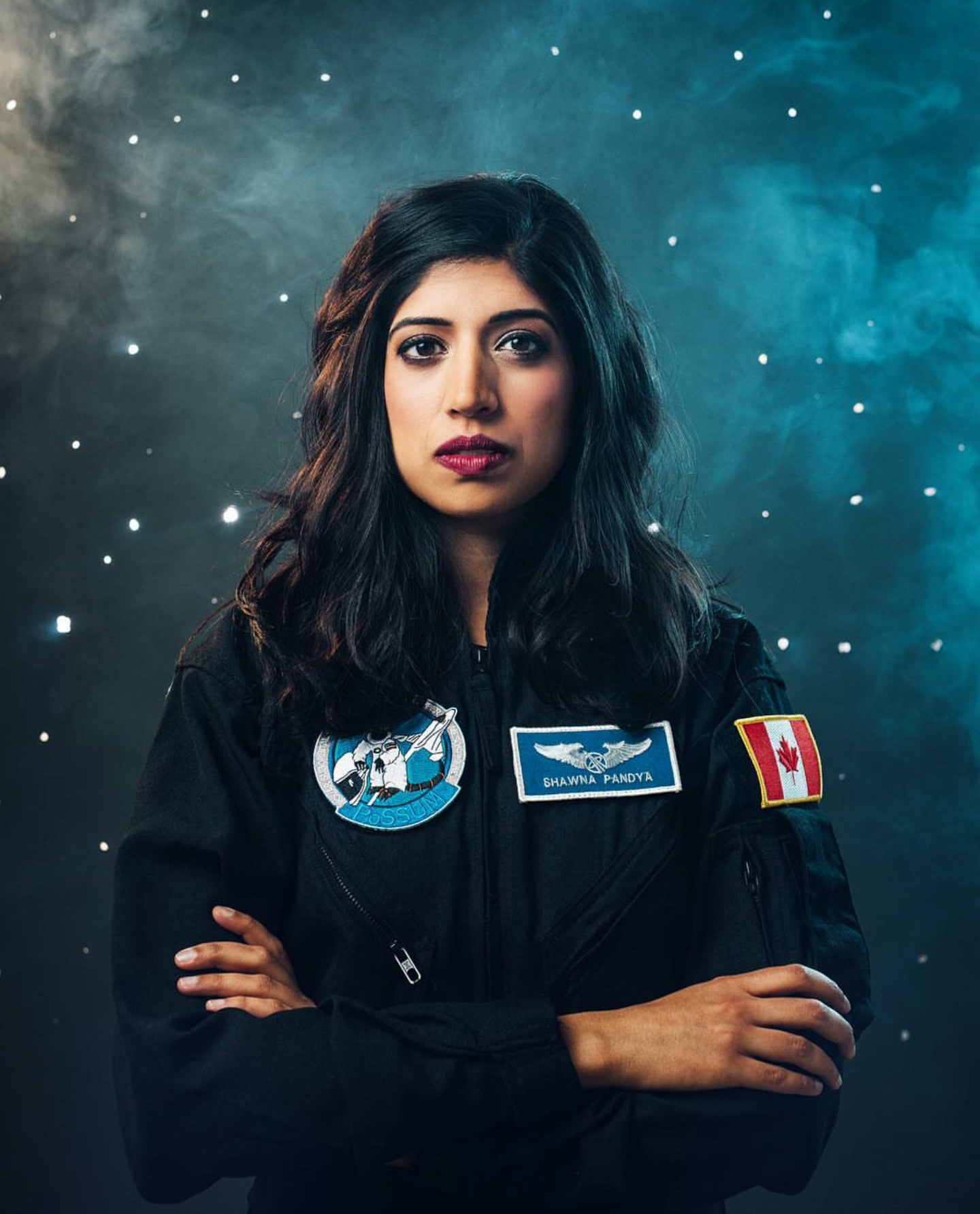
IIAS astronaut Dr. Shawna Pandya in her flight suit (Photo Credit: Cooper and O’Hara Photography)
It’s been months but she still vividly remembers the wee hours of the July morning last year when she celebrated the big moment with her teammates – USA’s Kellie Gerardi and Ireland’s Dr Norah Patten – after the official announcement was made. “I’m still in disbelief,” says the astronaut, adding, “This has been the product of a decade of work at the International Institute for Astronautical Sciences, building on the momentum of our first research spaceflight, IIAS-01, where my teammate Kellie Gerardi flew to space, and I served as the medical lead and one of the lead scientists on that mission. I still can’t believe I get to do this with trusted teammates I count as friends, ” says Shawna about IIAS-2 mission.
From Indian Traditions to Canadian Adventures: A Childhood Spark for Space
Her love for the space took seed in her childhood when she first saw Dr. Roberta Bondar, Canada’s first female astronaut, fly to space in 1992. “I thought, ‘Amazing! Women can do that!’ So, I wanted to be like Dr. Bondar, I just needed to follow her trajectory: become a neuroscientist, a physician and then an astronaut,” smiles Pandya.
Growing up in Alberta with parents who immigrated from Mumbai to Canada in the 1980s for better prospects, Pandya found her sense of adventure from them. “My father trained as a physiotherapist and found a promising job offer in Canada. Since my parents were never the ones to stray away from adventure, they packed their belongings in two suitcases to start a new life on the other side of the planet. They made sure that adventure and resourcefulness was a part of my upbringing too,” says Dr Shawna who grew up camping and being in the outdoors.

Childhood photo of Dr. Shawna Pandya, demonstrating an interest in flight early on, aged 3-4. (Credit: Pandya family)
Raised in Canada with Indian roots, Pandya found herself enjoying the best of both the worlds. “Joy and celebration were important to my mom growing up, and she wanted her kids to experience that too – so it means we got to experience Navraatri, Diwali, Holi and more – as well as Christmas, Hallowe’en and Easter,” says the astronaut, who credits her parents for being deeply invested in education. Her mother would spend hours teaching Pandya and her brother. “I remember her reading to us and teaching us multiplication tables from a young age, and even teaching me about the weightlessness of space when I was four. She took one of my teddy bears and explained to me that it would simply float around in space and I was in awe,” smiles Pandya.
Neuroscience to Space: Overcoming Setbacks with a Leap of Faith
Intrigued by space at a young age, her curiosity turned into inspiration when she saw Dr Bondar going to space. Keen to follow in her footsteps, Pandya too studied Neuroscience, then completed a master’s in Space Studies at the International Space University, followed by Medicine. “It seems to have worked out for me.” However, switching career from neurosurgery to space was an uphill task. “I started out in neurosurgery, and finished my training in primary care and now practice emergency medicine. At the time, transferring programs felt like a massive failure because I didn’t finish what I had set out to do. I felt like I was quitting, even though I knew my passions lay in space and extreme environment medicine,” says Pandya, who decided to take the leap of faith and dive into her true calling. “I know there are many people out there who worry about the same thing – ‘how will this setback impact my end goal?’ All I can say is – keep going, learn from your setbacks, and stay the course. You don’t know how the journey is going to end. So keep going,” adds IIAS astronaut.
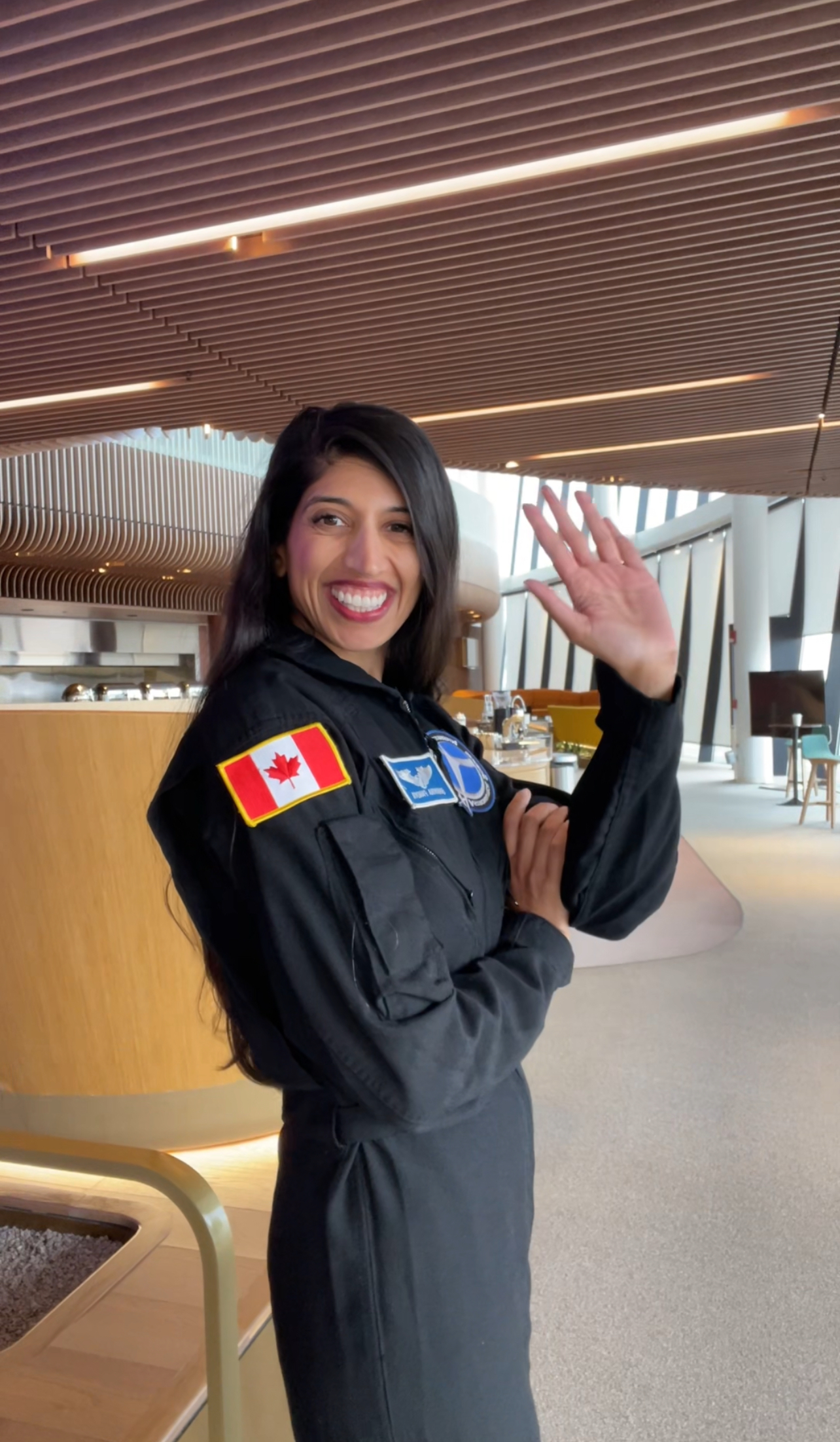
IIAS-02 Astronaut Dr. Shawna Pandya proudly displays her Canadian flag as the first named Canadian female commercial astronaut (Photo Credit: IIAS)
Championing Diversity and Shattering Space’s Glass Ceiling
This same passion led her to create history by becoming the first female commercial Canadian astronaut. “It still feels unbelievable that I get to do this, working with so many amazing people.” However, despite the feat, Dr Shawna believes that the glass ceiling is yet to broken. “Of the approximately 700 people who have been in space to date, only 12-14 percent are women. So, we have some catching up to do.” Moreover, not only are women under-represented as astronauts, but globally, they also make up only about 20-30 percent of technical and leadership roles at space agencies. “We need to be more assertive when it comes to recruiting, retention, and representation, so that women and young girls know they belong here, too. From a team standpoint, having more diverse backgrounds at the table sets a team up for success by providing a variety of perspectives,” says the Director of IIAS’ Space Medicine Group.
Training for 2026 Space Mission
But she is hopeful of better times as she gets to train with two female astronauts for her big space adventure in 2026 – IIAS-02 mission. “We are currently in the midst of down-selecting the science for our flight, focusing on payloads and experiments that prioritise women’s health, neuroscience, astronaut health and the physical sciences. Last summer, we began training in microgravity through parabolic flight where we practiced coordinated movements in zero gravity and learned how to operate payloads as a team,” explains Dr Shawna, who will continue zero-gravity training later this year.
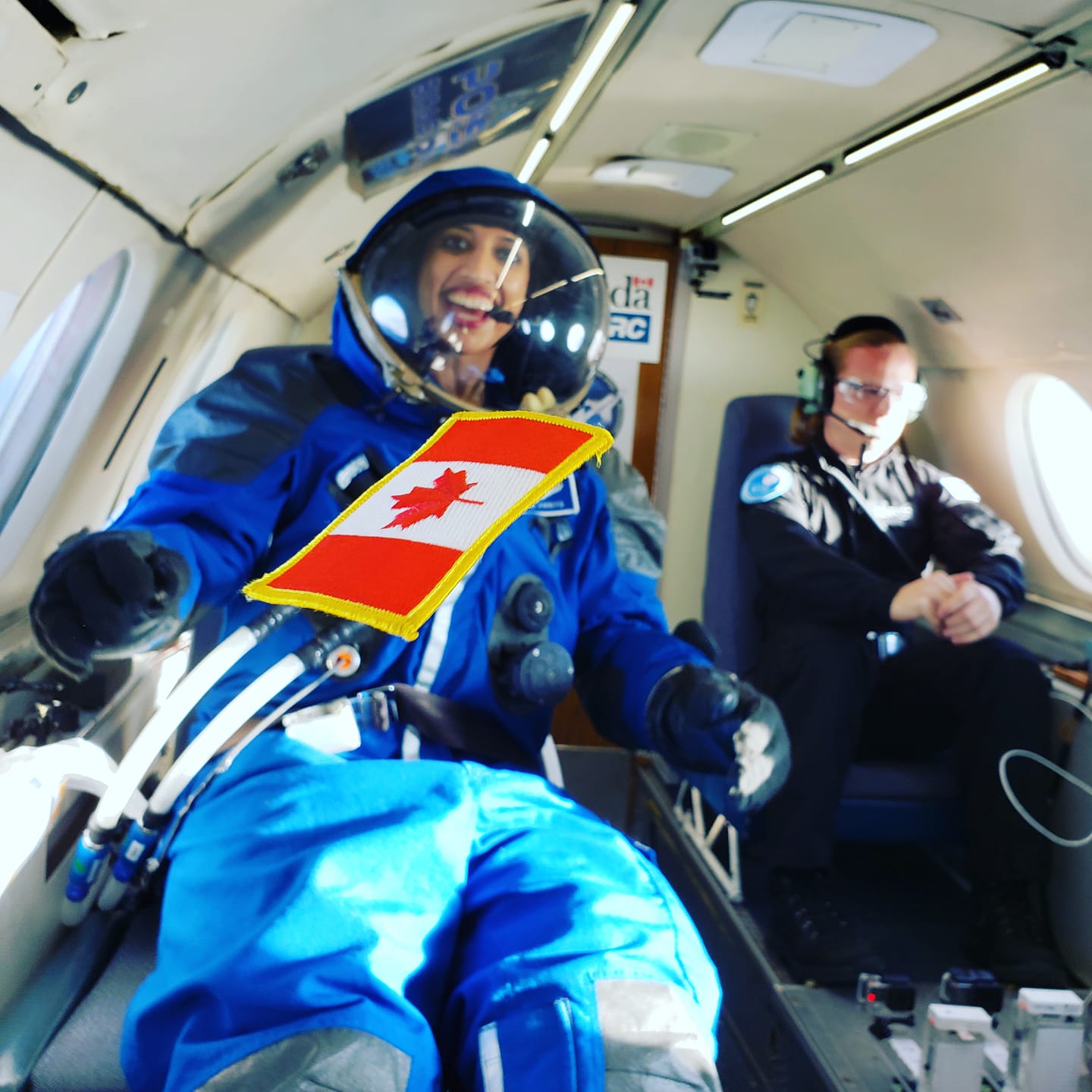
Microgravity IVA Suit Testing (Credit: IIAS): Dr. Shawna Pandya tests the capabilities of the Final Frontier Design Intravehicular Activity spacesuit when pressurized with the visor down during the 2018 IIAS microgravity campaign, in partnership with the National Research Council of Canada.
From ISRO Triumphs to Future Missions: India’s Pioneering Role in Space Exploration
With the rise in commercial space travel, the profile of who journeys into space is evolving. “Human spaceflight started out in the era of a showdown of a military cold war, then evolved to an era of inter-governmental collaboration for exploration and scientific discovery. Historically, this meant that it was first military pilots, and then engineers, pilots, scientists, and doctors who were typically selected for spaceflight. Now, in the era of commercial spaceflight, we are seeing access to open up to artists, entrepreneurs, and athletes. My hope is that as launch costs go down, space will continue to become more accessible, giving humans a new platform on which to create, innovate and continue to discover.”
While Dr Shawna Pandya is preparing for her spaceflight, she is equally excited about India’s contribution to space exploration, particularly with ISRO’s recent advancements. “I am so excited for what ISRO is doing, both in robotic exploration and in human spaceflight. Chandrayaan-3 was a success beyond belief; for any future Lunar South Pole exploration that happens, India will have led the way, says Pandya. On the human spaceflight side, she expressed enthusiasm for the upcoming Axiom Ax-4 mission, on which Group Captain Shubhanshu Shukla will be flying, as well as for the forthcoming Gaganyaan mission.
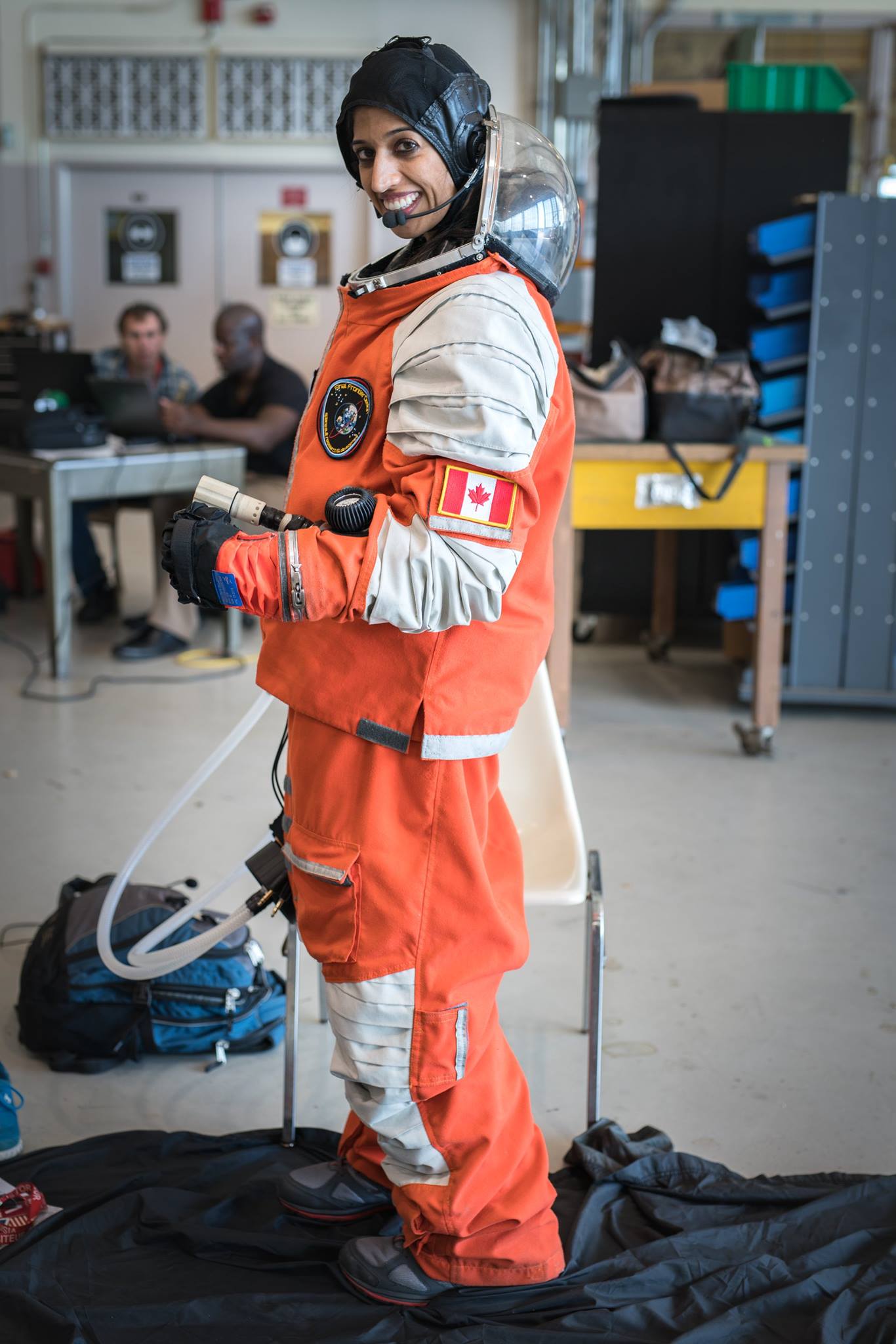
NRC 2017 (Credit: IIAS): Dr. Shawna Pandya gets ready to test the Final Frontier Design IVA (intravehicular activity) spacesuit in microgravity during the IIAS 2016 Parabolic Flight campaign.
Global Roots, Lasting Impact: Advancing Space Medicine
As someone of Indian heritage representing Canada on a global stage, she is a true Global Indian, who is proud of her roots. “Indians have so much love and pride for their own, both within India and abroad, and I feel lucky to have that support. I will wear that support with pride and know that it is not just myself that I represent, but the two countries as I journey into space, and continue to further my work in space medicine.”
Despite having found her footing in the world of space exploration, Dr Shawna Pandya isn’t ready to stop anytime soon as she plans to make a lasting contribution to space contribution. “I want to bring the best of our innovations in space medicine to help address our most pressing challenges in healthcare. Moreover, I want to help facilitate access to space and to leave a lasting positive impact on humanity,” she adds.
With all eyes set on the big space mission in 2026, Pandya is excited to take the baton forward. “‘You can be the first, but make sure you aren’t the last.’ My hope is that my spaceflight is but the beginning of an era of increased access to space, particularly in catalysing access to space for research,” she signs off.
- Follow Dr Shawna Pandya on LinkedIn

